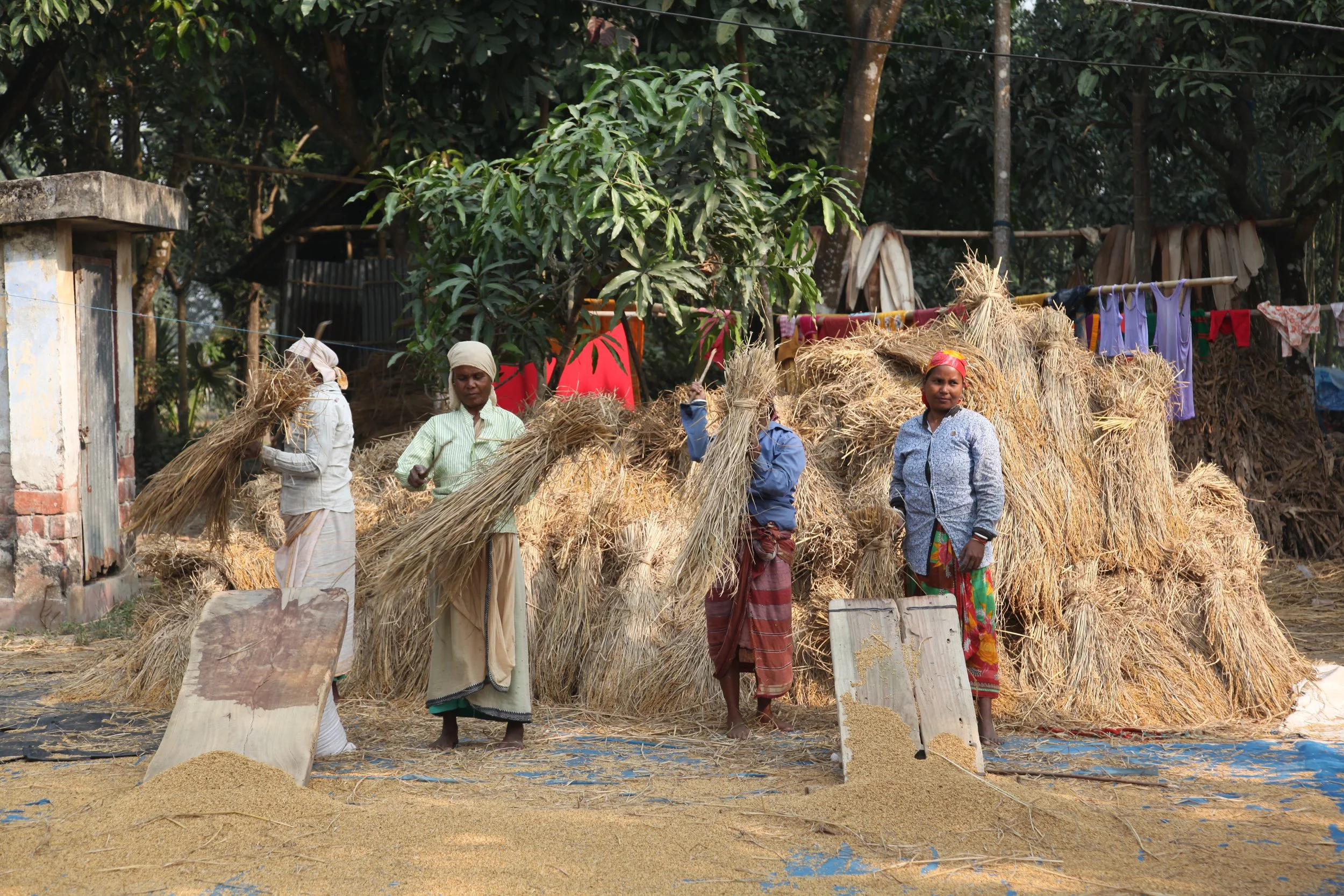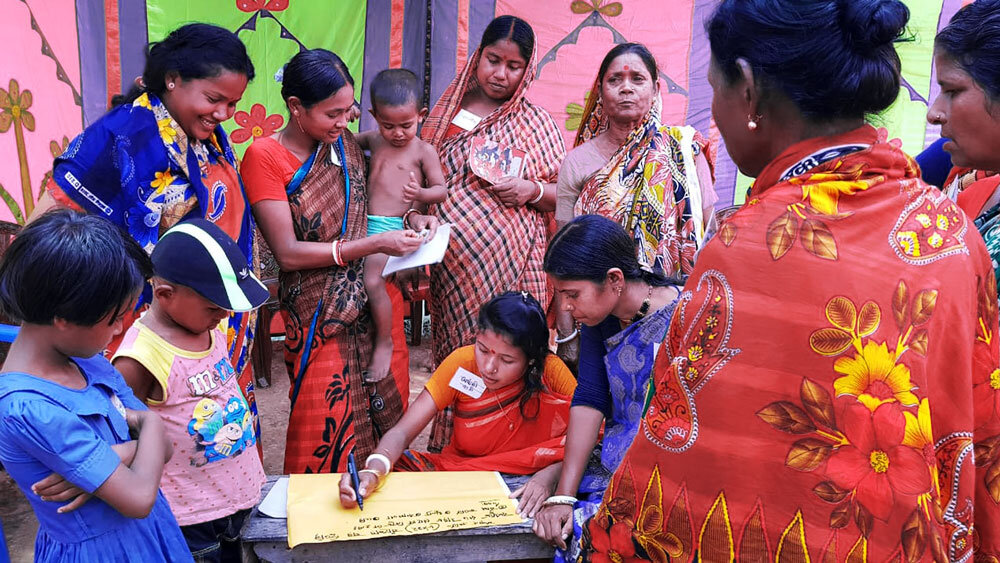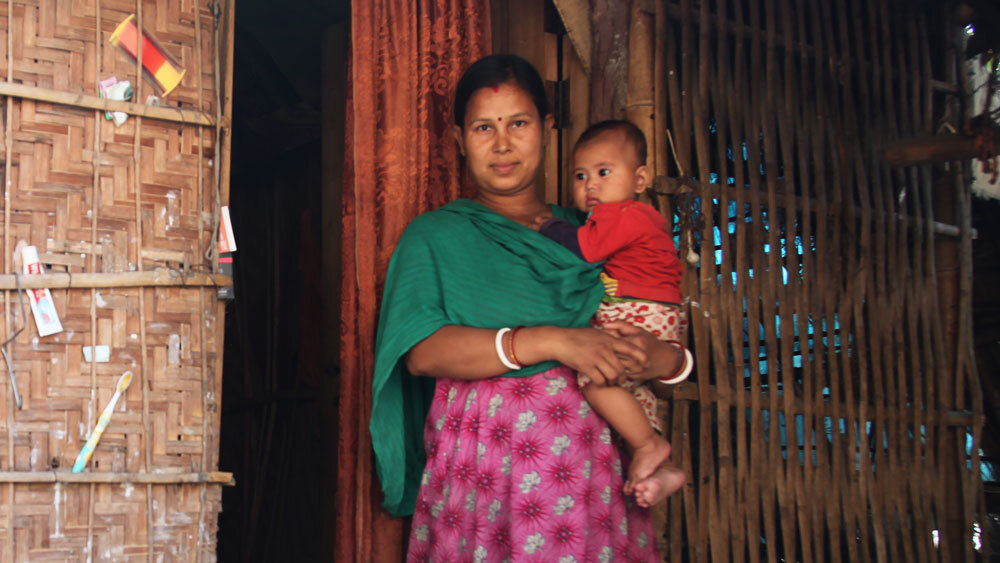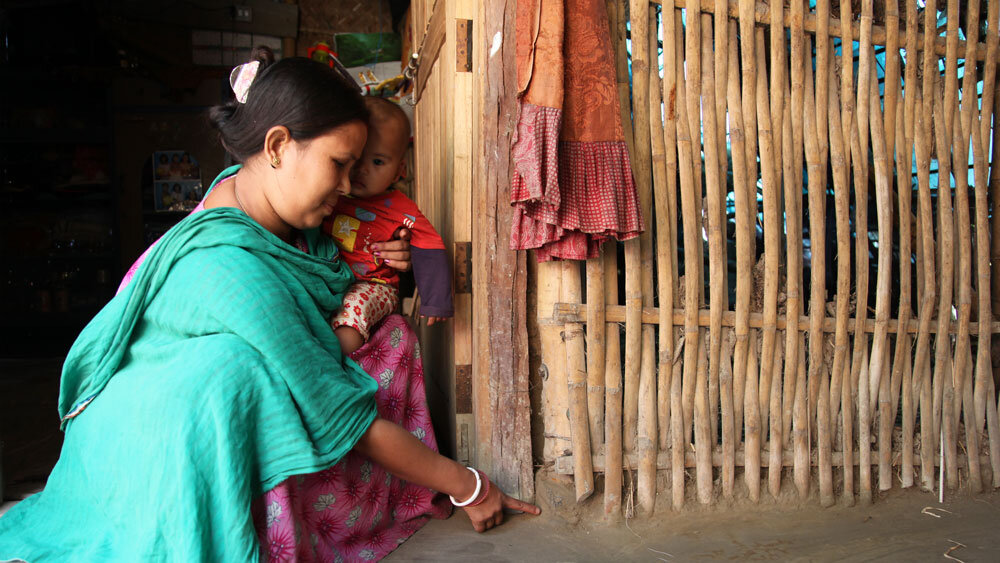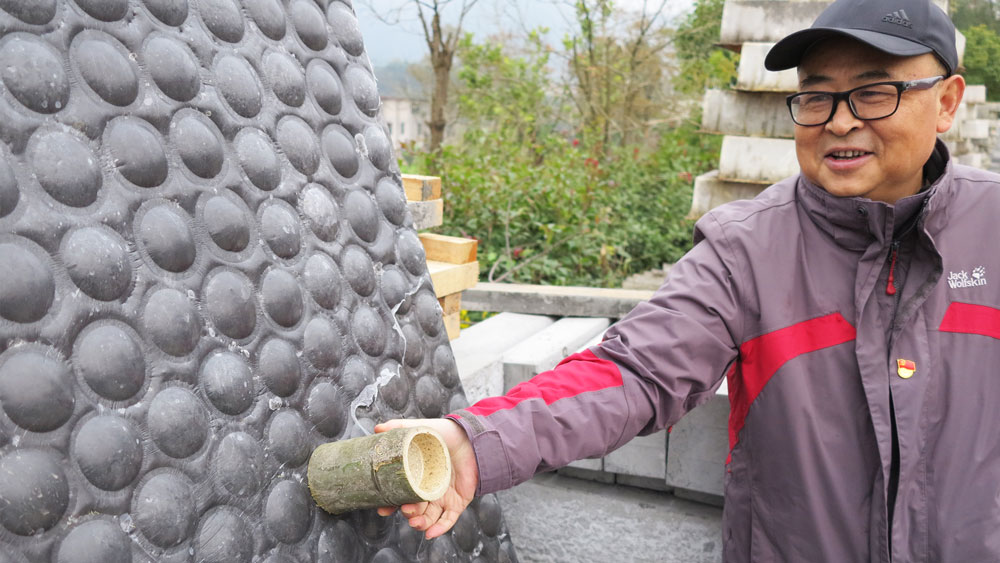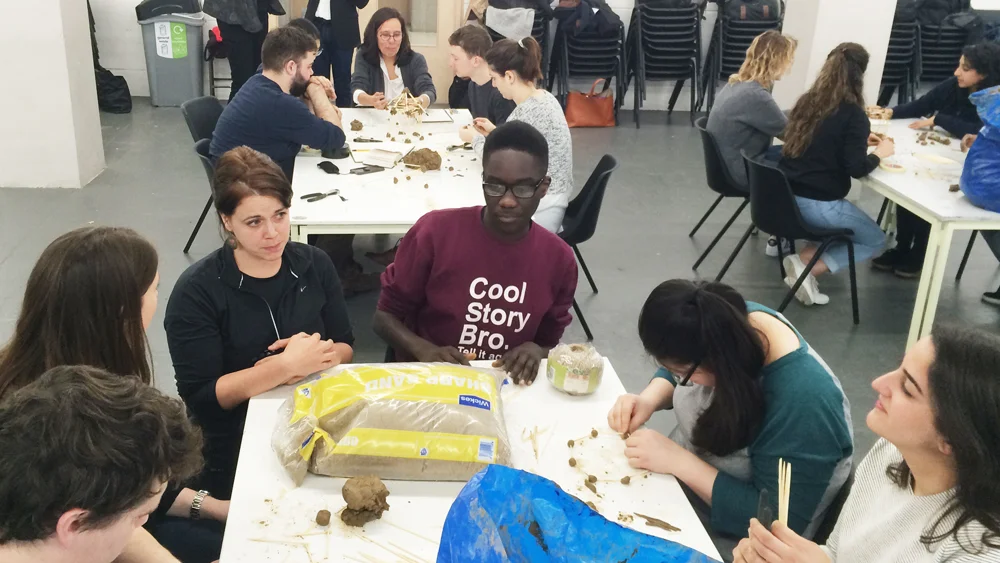Ponchomi previously lived in a mud house. It was a one-room dwelling with thick walls made of a simple mixture of earth and water. Monsoon rains and floods eroded her home, so she had to constantly repair it. She often checked for snakes which like to burrow in the warm earth – a neighbour had died from such a bite. Her outbuilding was barely standing; the bamboo having rotted from rising damp and termite attack.
She dreamed of a house where she could feel safe with her children, a building that would withstand the elements. As a day labourer, her husband didn’t earn enough money to buy the bricks they needed, so they were about to borrow money from a loan shark.
Ponchomi heard about our ‘build for safety’ workshops, which offered an alternative and joined the training. We returned to see what difference it has made. Her family now live in a secure bamboo-frame house. The posts are raised above the damp earth on kaatla (pad foundations), the material is treated to resist termites, cross bracing reinforces the structure and stops it from twisting during storms and seismic activity, the corrugated iron sheet roof is securely tied back into the structure and steel bolts strengthen the primary building joints.
“My house is much stronger now. It will last longer. These are small improvements but they make a big difference.”
She invited us in for tea and proudly showed us all the improvements they’ve made. They only borrowed a small sum, and they’ve already paid it back. She’s now dreaming of an extension; a second room for when her children grow up. She feels confident she’ll again be able to use the techniques she learned.
Ponchomi is happy to share her skills. She’s now an advocate in her village for what can be achieved with bamboo, which is often seen as a ‘poor man’s’ material.
Help us train more women to build for safety in Bangladesh. Donate to our training programme.
Visit our project page for more information.
Author: J. Ashbridge





